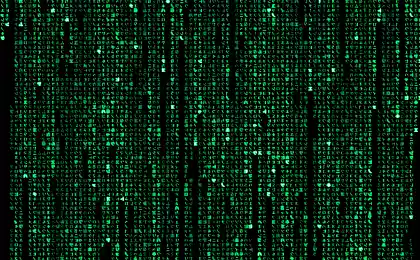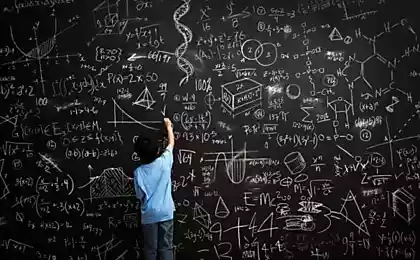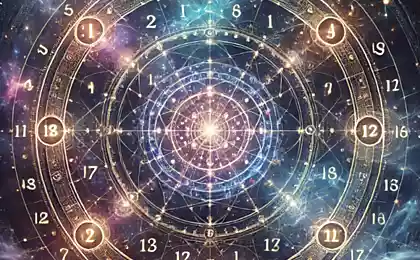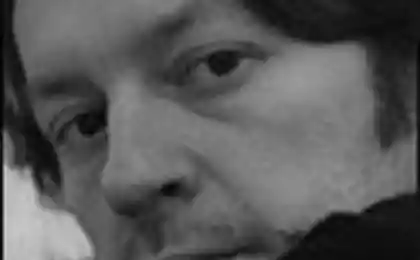470
Beauty squared —life in the matrix called "mathematics"
Beauty squared — a book about the fact that we live in the matrix called "mathematics", review of 
Beauty squared — a book about math
Than are known to us from childhood mathematical formula — the fruit of the human brain or just a reflection of the laws of the universe?
New book "Beauty squared" by Alex Bellos (Mann, Ivanov and Ferber, 2015) is trying to lead us to one very interesting conclusion: mathematics is not an abstraction invented by humans to count. Mathematics is only open to humanity laws, laws and regulations, which "runs" the world. And, apparently, we still know very, very little.
For example, let's look at the numbers. 1, 2, 3, 4, ... — this notation, which was used thousands of years for the account. They appear as abstractions to count objects. The people themselves somehow call them, and then came up with some additional definitions for easy handling. For example, what is the number odd (1, 3, 5, 7...) and even (2, 4, 6, 8, ...), which differ from the first that divided into 2. It would seem — invented by mankind marking the numbers that are divisible by two, there may be some nuances? But the reality is much more interesting.
The Greek philosopher Pythagoras, who lived in the sixth century BC, proclaimed odd numbers male and the even female, thus confirming marked by the Sumerians associative relationship between one man and two women. He argued that the reluctance to share two — is a sign of strength, while the tendency toward this kind of division is a sign of weakness. Pythagoras gave the following arithmetic support of their conclusions: odd numbers prevail over even exactly the same as the man predominates over the woman, as the addition of odd and even numbers always gives an odd number.
This sounds like a joke, but in the world there is plenty of evidence that odd numbers are fundamentally different in the perception of different cultures and peoples from even. In Christianity Adam God made first, and eve second. Unit symbolizes unity, while the two "sin as a deviation from the original good." Eastern philosophy is built on the recognition of the duality of the world, reflected in such symbols as Yin and Yang, darkness and light. Yin is associated with passivity, with the feminine, the Moon, bad luck and even numbers, and Yang with their opposites: aggressive, masculine, Sun, luck and odd numbers. Especially notable is Japan, where it is customary to give three, five or seven items, but never four or six. The predilection of the Japanese to the odd numbers until rooted, when in 2000 the government issued banknote 2000 yen, no one to use it.
Amazingly, our brain handles odd numbers longer than even. During the experiments, the subjects took an average of 20% more time to recognize odd numbers, besides, they did more mistakes. We treat the odd day otherwise, not only because of the centuries-old cultural attitudes, but also because differently people think about them. Odd numbers stimulate the brain.
The book describes a huge number of other examples of what people perceive special number. We know that the numbers have different colors, scents, shape, size, we even know what we like and what — not, even if can't really explain.
Thus, the number is a reflection of something more than just a tool for counting sheep in the herd. This abstraction, which is engraved deep in our brains.
To hit you eventually, will talk about how mathematics over 1000 years has revealed a very interesting pattern. It turns out that if you take any book, to write all the words occurring in it, and then sort them in order of decreasing frequency of use in the book — we see an interesting pattern. Second, the frequency of use of the word will occur much less frequently than the first. The third, much rarer than the second. The fourth is much rarer than the third, but less than the third relative to the second. And no matter what language the book is written. If it is thick enough — this rule is observed.
Math shows more: it turns out you can describe a simple formula that describes this series of numbers using the words in the book. The formula has the same form for different books, differing only in the coefficients, and then only slightly.
But that's not all. It turns out that this law applies to any sufficiently large and "random" sample. For example, if you take all the cities and their population, and then also put them in order of decreasing abundance, it turns out that this sequence obeys the same formula!
Or, you can for example check the balance sheet of a large company: if you take any number and rank according to frequency of use, we will see this dependence (!). In history there are cases when this method is taken out for clean water fraud, falsify statements: their data did not correspond to an open relationship, and a careful study of this report revealed fraud on a large scale.
Thus, mathematics is found even where we do not expect. It permeates this world, and how many more such laws we will open — I can't imagine.
The book also explains, of course, the numbers PI and e, and their startling relationship to each other, for example, through the imaginary unit. We know, how did the concept of negative numbers and what she gave the world, and then descend deeper and reach the imaginary units — entities that are impossible to see and imagine, but which explain the laws of the universe, and computation are the basis of modern science.
This is a completely unique book is a masterpiece which I will keep for my children, because it shows how complicated and simultaneously simple and beautiful the world is, and that he obeys the laws of mathematics.
The book is written in plain language, understandable to anyone, and it is really exciting. It's amazing how artistically interesting the author tells us about mathematics. It was while reading it, I'd missed my stop in the subway, which with me almost never happens.
In short, I RECOMMEND! The book is worth to dive into it, read and then reread. published
Author: Dmitry Torshin
P. S. And remember, just changing your mind — together we change the world! ©
Source: torsh.in/beauty-in-square-book/

Beauty squared — a book about math
Than are known to us from childhood mathematical formula — the fruit of the human brain or just a reflection of the laws of the universe?
New book "Beauty squared" by Alex Bellos (Mann, Ivanov and Ferber, 2015) is trying to lead us to one very interesting conclusion: mathematics is not an abstraction invented by humans to count. Mathematics is only open to humanity laws, laws and regulations, which "runs" the world. And, apparently, we still know very, very little.
For example, let's look at the numbers. 1, 2, 3, 4, ... — this notation, which was used thousands of years for the account. They appear as abstractions to count objects. The people themselves somehow call them, and then came up with some additional definitions for easy handling. For example, what is the number odd (1, 3, 5, 7...) and even (2, 4, 6, 8, ...), which differ from the first that divided into 2. It would seem — invented by mankind marking the numbers that are divisible by two, there may be some nuances? But the reality is much more interesting.
The Greek philosopher Pythagoras, who lived in the sixth century BC, proclaimed odd numbers male and the even female, thus confirming marked by the Sumerians associative relationship between one man and two women. He argued that the reluctance to share two — is a sign of strength, while the tendency toward this kind of division is a sign of weakness. Pythagoras gave the following arithmetic support of their conclusions: odd numbers prevail over even exactly the same as the man predominates over the woman, as the addition of odd and even numbers always gives an odd number.
This sounds like a joke, but in the world there is plenty of evidence that odd numbers are fundamentally different in the perception of different cultures and peoples from even. In Christianity Adam God made first, and eve second. Unit symbolizes unity, while the two "sin as a deviation from the original good." Eastern philosophy is built on the recognition of the duality of the world, reflected in such symbols as Yin and Yang, darkness and light. Yin is associated with passivity, with the feminine, the Moon, bad luck and even numbers, and Yang with their opposites: aggressive, masculine, Sun, luck and odd numbers. Especially notable is Japan, where it is customary to give three, five or seven items, but never four or six. The predilection of the Japanese to the odd numbers until rooted, when in 2000 the government issued banknote 2000 yen, no one to use it.
Amazingly, our brain handles odd numbers longer than even. During the experiments, the subjects took an average of 20% more time to recognize odd numbers, besides, they did more mistakes. We treat the odd day otherwise, not only because of the centuries-old cultural attitudes, but also because differently people think about them. Odd numbers stimulate the brain.
The book describes a huge number of other examples of what people perceive special number. We know that the numbers have different colors, scents, shape, size, we even know what we like and what — not, even if can't really explain.
Thus, the number is a reflection of something more than just a tool for counting sheep in the herd. This abstraction, which is engraved deep in our brains.
To hit you eventually, will talk about how mathematics over 1000 years has revealed a very interesting pattern. It turns out that if you take any book, to write all the words occurring in it, and then sort them in order of decreasing frequency of use in the book — we see an interesting pattern. Second, the frequency of use of the word will occur much less frequently than the first. The third, much rarer than the second. The fourth is much rarer than the third, but less than the third relative to the second. And no matter what language the book is written. If it is thick enough — this rule is observed.
Math shows more: it turns out you can describe a simple formula that describes this series of numbers using the words in the book. The formula has the same form for different books, differing only in the coefficients, and then only slightly.
But that's not all. It turns out that this law applies to any sufficiently large and "random" sample. For example, if you take all the cities and their population, and then also put them in order of decreasing abundance, it turns out that this sequence obeys the same formula!
Or, you can for example check the balance sheet of a large company: if you take any number and rank according to frequency of use, we will see this dependence (!). In history there are cases when this method is taken out for clean water fraud, falsify statements: their data did not correspond to an open relationship, and a careful study of this report revealed fraud on a large scale.
Thus, mathematics is found even where we do not expect. It permeates this world, and how many more such laws we will open — I can't imagine.
The book also explains, of course, the numbers PI and e, and their startling relationship to each other, for example, through the imaginary unit. We know, how did the concept of negative numbers and what she gave the world, and then descend deeper and reach the imaginary units — entities that are impossible to see and imagine, but which explain the laws of the universe, and computation are the basis of modern science.
This is a completely unique book is a masterpiece which I will keep for my children, because it shows how complicated and simultaneously simple and beautiful the world is, and that he obeys the laws of mathematics.
The book is written in plain language, understandable to anyone, and it is really exciting. It's amazing how artistically interesting the author tells us about mathematics. It was while reading it, I'd missed my stop in the subway, which with me almost never happens.
In short, I RECOMMEND! The book is worth to dive into it, read and then reread. published
Author: Dmitry Torshin
P. S. And remember, just changing your mind — together we change the world! ©
Source: torsh.in/beauty-in-square-book/
Golden kids — the problem of modernity
Scientists have learned to produce diamonds from the contained carbon dioxide in the air






















